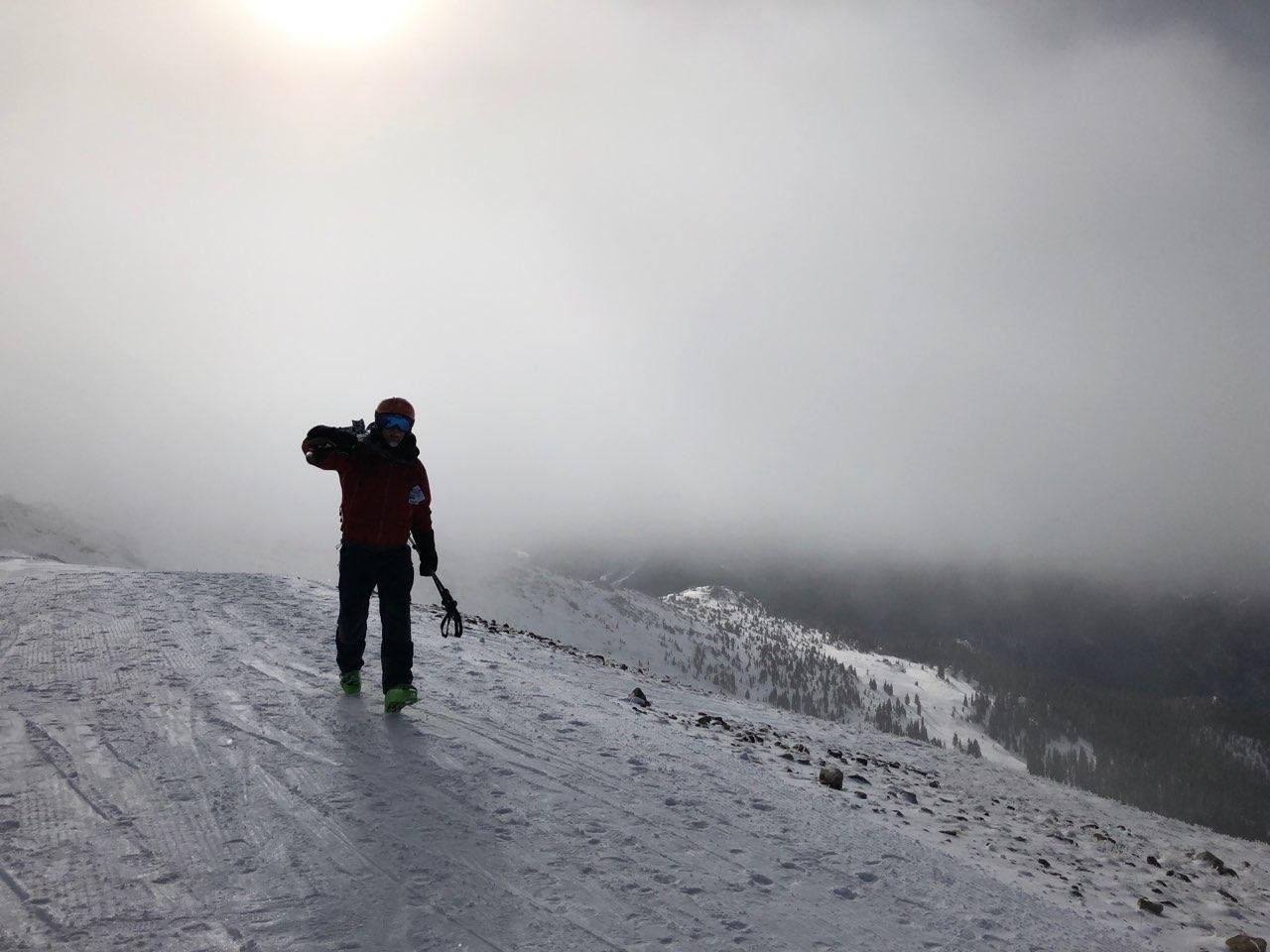Importance of Hydration While Skiing/Boarding
Hydration is an extremely important factor in human physiology and performance. Our bodies are composed majoritively of water, and the electrolytes circulating within this water are responsible for many of the neurochemical reactions responsible for muscle contraction, cognition (thoughts, planning, reaction), and maintenance of general homeostasis or balance in our bodies. While fluid intake obviously has to be increased in hot areas or during exercise in the heat because of sweat, an overlooked instance in which we need to be cognizant of increased fluid intake requirements is while we are out on the mountain skiing or mountaineering.
Effects of Dehydration:
Impaired Cognitive Performance
Early onset fatigue both mental and physical
Mood disturbance
Decreased Muscle function and capacity
Fluid requirements may not be as high as if we are exercising in the desert, it’s likely rare that patrol has to sled someone down the mountain due to dehydration, but you have likely felt some of the decreased performance or cognitive slowing due to dehydration during high output days out. A study of alpine skiers at a training camp showed that in spite of drinks being readily available throughout the day, between 50 and 80% of the athletes had fluid loss levels equivalent to early levels for dehydration, and these athletes were training at altitudes between 5,000 and 6,000ft (Aerenhouts et al. 2021). One of the reasons for the findings in this study is that we have an impaired thirst sensation when exercising in the cold and at altitude. Which means that relying on the sensation of thirst during a day on the mountain is a POOR indicator of how much we actually need to drink.
Another layer to the hydration equation is altitude; here in Summit county we live at elevations higher and can regularly exercise intensely at above 12,000ft above sea level. The cold dry air and higher altitudes can contribute to both increased energy expenditure, as well as increased water loss due to higher levels of breathing. When we breath air into our lungs, the air cannot be too dry or else it will be more difficult to absorb oxygen, the vital element required for us to produce energy efficiently (we can produce energy without oxygen, but only for short periods of time). If our respiration or breathing rate increases, then we are increasing the amount of moistened air that is being expelled from our bodies. Thus enhancing water loss rates during activity.
The cold air that we experience getting off the lift at the top of the mountain can also instigate a process called “Cold induced Diuresis” or increased urination at cold temperatures. This physiological phenomenon potentially occurs due to blood flow shifting from our extremities to more centrally in our bodies attempting to maintain a stable core body temperature (Stand,2006). This phenomenon is usually self limiting as our bodies counteract the fluid loss by retaining more water, but it can jump start the fluid loss early in the day.
Core body temperature extremes can also lead to increased fluid needs because fluid exchange is one of the ways in which our body maintains homeostasis and an optimal body temperature. We all know that we need to take in more fluids on warm or hot days because we are sweating in order to expel heat, as well as keep our skin cool. The flipside of this is that if we are too cold we may begin to shiver in order to generate heat from our muscles. Shivering itself is a series of rapid contract/relax cycles in our muscles to increase metabolic rate, one of the byproducts of this response is heat. This increase in heat can be very helpful in the short term to keep our core body temperature at optimal levels, but this process also increases our utilization of electrolytes, as well as fluids.
Fluid Intake Tips for Staying Hydrated on the Mountain:
Drink 2-4 mL/lb in the 2-4 hours before going out to the mountain to begin the day in an optimal state of hydration (Thomas et al. 2016)
Fluid intake does not have to be from water, but can also come from coffee, tea, juice, or other liquids(Thomas et al. 2016)
Contrary to popular belief, intake of your normal levels of caffeine does not enhance the probability of dehydration or fluid loss. Intake of level ABOVE your normal amount may lead to increased fluid losses.
Consuming fluid with sodium (salt) may help with fluid retention and combat CID
I usually mix my water with an electrolyte only or electrolyte with carbohydrate powder. Two of my favorite brands right now (no affiliation) are LMNT (electrolytes only) and Skratch labs (electrolyte and carbohydrate)
An added bonus is that salt lowers the freezing point of water which will make it less likely for your water bottle to freeze
During Alpine skiing; an intermittent but moderately intense physical activity, one should try to consume between .4 and .8 L/h of fluids
Sorry but alcoholic beverages are natural diuretics that induce urination and fluid loss
Also PSA here if you are going to slam a beer on the lift please dispose of the can appropriately. Leaving your trash on the mountain is tacky and unnecessary
If skinning up the mountain, activity levels and sweat levels are going to be higher, so you may need a higher intake of fluids to accommodate for increased fluid loss from exercise.
Indicators of Dehydration:
Thirst impulses and dry mouth are fairly poor indicators of being adequately hydrated on the mountain; both cold air and altitude can decrease our sensation of thirst, so if you become thirsty, you are likely already dehydrated
Urine Color: This may sound weird, but the color of our urine can be an indicator or how well we are hydrated.
Absolutely clear urine: likely overhydrated, may benefit from adding sodium or electrolytes to your fluids
Pale yellow: indicative of optimal hydration status
dark yellow: dehydrated, need to increase intake of water or fluids
brown: indicator of kidney failure or significant kidney damage, please consult a physician immediately
Case Example:
I am usually about 160lbs, So if that is what I weigh in the morning, I need to make sure that I do not weigh much less than 156 lbs at then end of the day (ensuring less than 2% loss of fluids throughout the day). I can do this by drinking between 320mL (10oz) and 640mL (22oz or half of a nalgene bottle) before heading out to the mountain. While on the mountain I should try and drink between .4 and .8 liters per hour of skiing, but potentially a little less if I am spending a lot of time standing in the lift line (which seems to be happening more and more unfortunately). I usually like to add some sodium to my fluids to help with fluid retention and taste. Many electrolyte beverages also contain some glucose, which can be effective in keeping glucose energy stores up throughout the day.At the end of the day I can re weigh myself and ensure to replenish any extra fluid losses by drinking fluids throughout the evening or with dinner.
References:
Aerenhouts, Dirk, Laurent Chapelle, Peter Clarys, and Evert Zinzen. 2021. “Hydration Status in Adolescent Alpine Skiers During a Training Camp.” Journal of Human Kinetics 79 (July): 55–63.
Stand, Position. n.d. “Prevention of Cold Injuries during Exercise.” https://doi.org/10.1249/01.mss.0000241641.75101.64.
Thomas, D. Travis, Kelly Anne Erdman, and Louise M. Burke. 2016. “American College of Sports Medicine Joint Position Statement. Nutrition and Athletic Performance.” Medicine and Science in Sports and Exercise 48 (3): 543–68.



